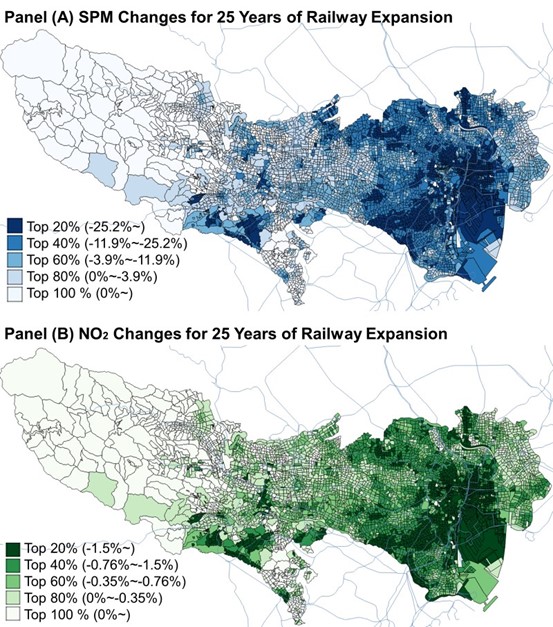

Research and Development
2024.05.27 Mon
The Use of Earth Observation Satellite Data in the Humanities and Social Sciences (3)
This series introduces research using Earth observation data by experts in socioeconomics.
The third article will focus on the effects of railway expansion on improving air pollution.
Same as the first and second article, this research is conducted with Managi Laboratory, Graduate School of Engineering,
Kyushu University and utilizes satellite data.
Railway Expansion Reduces Air Pollution:
Insights from 25 Years in Tokyo for Future Policy
Sunbin Yoo1, Junya Kumagai2, Ryosuke Aki1 and Shunsuke Managi1
1: Faculty of Engineering, Kyushu University, Japan
2: Faculty of Economics, Fukuoka University, Japan
This article is currently under review at Nature Cities.
Introduction
Urban traffic congestion is a growing global challenge, profoundly impacting public health and the environment (Lelieveld et al. (2015), Currie and Walker (2011), Brunekreef and Holgate (2002)). The air pollution resulting from congested roads poses significant health risks. Long-term exposure to pollutants such as particulate matter and nitrogen dioxide is linked to reduced lung function, cognitive impairments, and increased all-cause mortality (Stockfelt et al. (2015)), underscoring the urgent need for effective pollution mitigation strategies.
Policymakers and international organizations advocate for the expansion of railway and public transit systems as viable solutions to combat air pollution, highlighting their potential to improve urban air quality (WHO (2021)).
However, the effectiveness of railway expansions in mitigating air pollution and congestion remains underexplored, despite substantial initial investments. The debate revolves around two opposing effects: the ‘Mohring Effect’ (Mohring (1972)) predicts a shift from private cars to railways, potentially easing congestion and pollution, while improved traffic conditions may paradoxically increase private car use, exacerbating pollution (Vickrey (1969), Duranton and Turner (2011)). This study aims to clarify the impact of railway expansion on air pollution, addressing this significant research gap.
In this article, we employ a hypothetical railway network based on global numerical altitude data and land-use land covering chart obtained from JAXA’s land observation technology satellites “Dachi” (ALOS) and “Dachi 2” (ALOS-2) for quantitative analysis.
Air pollution reduction due to railway expansions
Presenting our findings in Figure 1 elucidates the heterogeneity in air pollution reduction across different regions. By applying the estimated coefficients from our empirical models—which consider initial pollution levels—to the observed changes in MA, we noted considerable decreases in both Suspended Particulate Matter (SPM) and Nitrogen Dioxide (NO2), as shown in Figure 1. Specifically, areas with high initial SPM concentrations saw an average SPM reduction of 21.65% (with a median reduction of 6.565%), and NO2 levels dropped by an average of 1.401% (median reduction of 0.543%). Primarily, reductions in SPM were noted in densely populated and heavy-industry areas, while decreases in NO2 were more apparent in residential and business districts.

Mechanism
Our study operates under the hypothesis that railway network expansions enhance ridership by making public railway transportation more accessible. Utilizing annual station-level railway ridership data spanning from 2011 to 2019, sourced from the MLIT, we scrutinize the impact of railway expansion on ridership data. Table 1 presents the impact of railway expansion and the opening of new railway stations on ridership figures. It employs four regression models to analyze the effects, utilizing MA and proximity treatments at distances of 500 meters, 1 kilometer, and 2 kilometers. This analysis follows a DID approach for its specifications.
Our result suggests that railway infrastructure improvements induces ridership increases. Model (1) indicates a 1.556% increase in ridership from railway expansions per 1% MA increase. Further, Models (2), (3), and (4) reveal that proximity to new stations significantly boosts ridership: a 70.2% increase within a 500m radius, 58.9% within 1km, and 41.5% within 2km, compared to areas without railway access. These findings underscore the role of railway expansions in mitigating air pollution by attracting more passengers. The gradual decrease in ridership growth with increasing distance from new stations, as evidenced from Models (2) through (4), suggests a natural decline in railway use the farther residents are from a station. Further analysis using interpolated ridership data supports these conclusions, highlighting the importance of continued research with more comprehensive data sets.
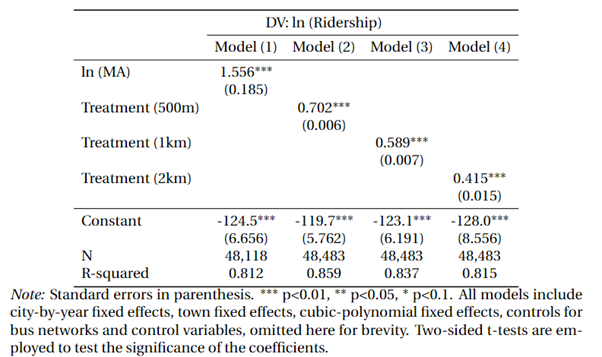
Cost-Benefit Analysis
Our cost-benefit analysis employs regression coefficients to evaluate the health impacts of railway expansion via air pollution reduction, focusing on two primary benefits: health improvements from better air quality and time savings from decreased congestion.
Firstly, health benefits arise from the enhanced air quality, leading to reduced morbidity and mortality. The well-documented relationship between exposure to airborne pollutants like SPM and NO_2 and increased cardiorespiratory disease risks underpins our analysis. To quantify the reductions in mortality and morbidity attributable to decreased levels of SPM and $NO_2$ due to railway network expansion, we apply the Value of Statistical Life (VSL) methodology. This approach allows us to assign monetary values to these health improvements, reflecting the societal willingness to pay for a reduction in mortality risk.
Secondly, our study quantifies the congestion relief benefits resulting from the expansion of the railway network. By analyzing our original survey data collected from approximately 247,000 Japanese respondents between 2015 and 2017, and integrating insights from seminal research, particularly Li et al., (2019), we pinpoint the average traffic delay in Tokyo at roughly 25 minutes. Furthermore, drawing upon the findings of Yang et al., (2018) which demonstrate a 15% reduction in commuting delays following the introduction of new railway lines, we assess the impact of the average number of stations introduced per town on MA. Applying a 15% reduction in commuting delays for each new line opening—equivalent to an average of 22.8 stations in Yang et al., (2018) -our findings indicate that, over a period of 25 years, the cumulative improvements in MA have led to an average reduction of 7.36% in travel times during traffic delays. To quantify the monetary value of this time savings, we employ the Value of Time (VOT) framework, which assigns a monetary value to the average 7.36% reduction in traffic delays.
Table 2 etails the health and congestion benefits derived from railway expansion in Tokyo, segmented into specific categories for clarity: (a) benefits calculated based on initial pollution levels.
Our calculation of health and congestion benefits, taking into account areas with high initial pollution (item (a)) and the city center (item (d)), indicates gains from railway expansion. Health benefits are calculated between 61.975 and 135.709 million USD, with congestion benefits of 78.169 million USD. These benefits correspond to 0.898-1.968% and 1.128% of the total construction costs, respectively. The variation in health benefits between (a) and (d) stems from the differences in estimated coefficients derived from distinct subsamples. Notably, a significant portion of these benefits is concentrated in the Tokyo 23 wards, areas characterized by high population density and an extensive railway network. This finding highlights the crucial role of railway infrastructure in bolstering public health and enhancing traffic efficiency, particularly in densely populated urban centers.

Conclusion
Our investigation into Tokyo’s railway expansion over the past 25 years illustrates its significant role in mitigating urban air pollution. Through an in-depth analysis of both direct and broader impacts of railway network enhancements on air quality, we enhance our understanding of railway systems’ contributions to environmental improvement and public health. Our findings indicate that over 25 years, railway expansion has led to a decrease in SPM and NO2 densities by 8% and 1.5%, respectively, without accounting for initial pollution levels, and up to 21% and 1% when considering these levels. This significant reduction exceeds the 2 to 4% decrease identified in previous studies like those of Li (2019), which focused on the immediate effects of railway openings. Our broader temporal scope and focus on network expansion justify these larger estimates.
Our analysis also projects health benefits ranging from 61.975 to 135.709 million USD, with congestion alleviation benefits around 78.169 million USD. While these figures are in the range of Gendron-Carrie et al., (2022)’s projections, they fall short of the 1.0 to 3.1 billion USD suggested by Li (2019). It’s important to note that our analysis, focused primarily on direct health impacts, might not encompass the full spectrum of benefits, including impacts on labor productivity and the reduction of other pollutants. Nevertheless, the interplay between increased railway ridership and improvements in air quality underscores the necessity for ongoing railway network development. This study, by confirming the substantial role of railway expansions in pollution reduction, anticipates lasting benefits well beyond the implementation of forthcoming metro projects.
In conclusion, our study supports railway system expansions as effective solutions to urban air pollution and congestion challenges. By providing an in-depth analysis of Tokyo’s railway expansion experience, it highlights the potential of railway infrastructure in promoting sustainable urban living conditions. As cities worldwide confront environmental and public health concerns, our insights offer valuable guidance for incorporating railway expansions into comprehensive urban and environmental policy frameworks.
References
- Brunekreef, Bert and Stephen T Holgate, “Air pollution and health,” The lancet, 2002, 360 (9341), 1233–1242.
- Currie, Janet and Reed Walker, “Traffic congestion and infant health: Evidence from E-ZPass,” American Economic Journal: Applied Economics, 2011, 3 (1), 65–90.
- Duranton, Gilles and Matthew A. Turner, “The Fundamental Law of Road Congestion: Evidence from US Cities,” American Economic Review, October 2011, 101 (6), 2616–52.
- Gendron-Carrier, Nicolas, Marco Gonzalez-Navarro, Stefano Polloni, and Matthew A. Turner, “Subways and Urban Air Pollution,” American Economic Journal: Applied Economics, January 2022, 14 (1), 164–96.
- Lelieveld, Jos, John S Evans, Mohammed Fnais, Despina Giannadaki, and Andrea Pozzer, “The contribution of outdoor air pollution sources to premature mortality on a global scale,” Nature, 2015, 525 (7569), 367–371.
- Li, Shanjun, Yanyan Liu, Avralt-Od Purevjav, and Lin Yang, “Does subway expansion improve air quality?,” Journal of Environmental Economics and Management, 2019, 96, 213–235.
- Mohring, Herbert, “Optimization and scale economies in urban bus transportation,” The American Economic Review, 1972, 62 (4), 591–604.
- Stockfelt, Leo, Eva M Andersson, Peter Molnár, Annika Rosengren, Lars Wilhelmsen, Gerd Sallsten, and Lars Barregard, “Long term effects of residential NOx exposure on total and cause-specific mortality and incidence of myocardial infarction in a Swedish cohort,” Environmental research, 2015, 142, 197–206.
- Vickrey, William S., “Congestion Theory and Transport Investment,” The American Economic Review, 1969, 59 (2), 251–260.
- WHO, “Review of evidence on health aspects of air pollution: REVIHAAP project: technical report,” Technical Report, World Health Organization 2021.
- Yang, Jun, Shuai Chen, Ping Qin, Fangwen Lu, and Antung A Liu, “The effect of subway expansions on vehicle congestion: Evidence from Beijing,” Journal of Environmental Economics and Management, 2018, 88, 114–133.
Search by Year
Search by Categories
Tags
-
#Earthquake
-
#Land
-
#Satellite Data
-
#Aerosol
-
#Public Health
-
#GCOM-C
-
#Sea
-
#Atmosphere
-
#Ice
-
#Today's Earth
-
#Flood
-
#Water Cycle
-
#AW3D
-
#G-Portal
-
#EarthCARE
-
#Volcano
-
#Agriculture
-
#Himawari
-
#GHG
-
#GPM
-
#GOSAT
-
#Simulation
-
#GCOM-W
-
#Drought
-
#Fire
-
#Forest
-
#Cooperation
-
#Precipitation
-
#Typhoon
-
#DPR
-
#NEXRA
-
#ALOS
-
#GSMaP
-
#Climate Change
-
#Carbon Cycle
-
#API
-
#Humanities Sociology
-
#AMSR
-
#Land Use Land Cover
-
#Environmental issues
-
#Quick Report
Related Resources
Related Tags
Research and Development Related Articles
-
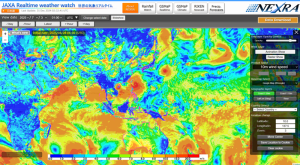 Research and Development 2025.06.18 Wed Advancing Space-Based Weather Analysis and Forecasting – Renewal of JAXA’s Realtime Weather Watch ‘NEXRA3’ and Performance Evaluation with the previous system (Overview Article)
Research and Development 2025.06.18 Wed Advancing Space-Based Weather Analysis and Forecasting – Renewal of JAXA’s Realtime Weather Watch ‘NEXRA3’ and Performance Evaluation with the previous system (Overview Article) -
 Research and Development 2025.03.27 Thu Launch of Ocean Weather Forecasts 1km resolution
Research and Development 2025.03.27 Thu Launch of Ocean Weather Forecasts 1km resolution -
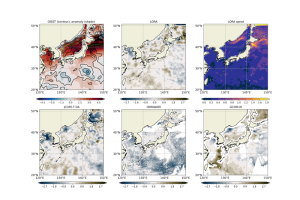 Research and Development 2024.03.06 Wed High sea surface temperatures in the Sea of Japan in relation to Typhoon No. 7, the only typhoon to hit Japan in 2023
Research and Development 2024.03.06 Wed High sea surface temperatures in the Sea of Japan in relation to Typhoon No. 7, the only typhoon to hit Japan in 2023 -
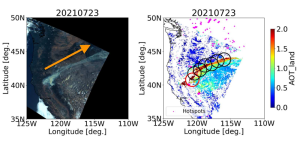 Research and Development 2023.10.12 Thu GCOM-C Estimation of Climate Impacts of Aerosols Associated with Extreme Global Wildfires (overview article)
Research and Development 2023.10.12 Thu GCOM-C Estimation of Climate Impacts of Aerosols Associated with Extreme Global Wildfires (overview article)

















